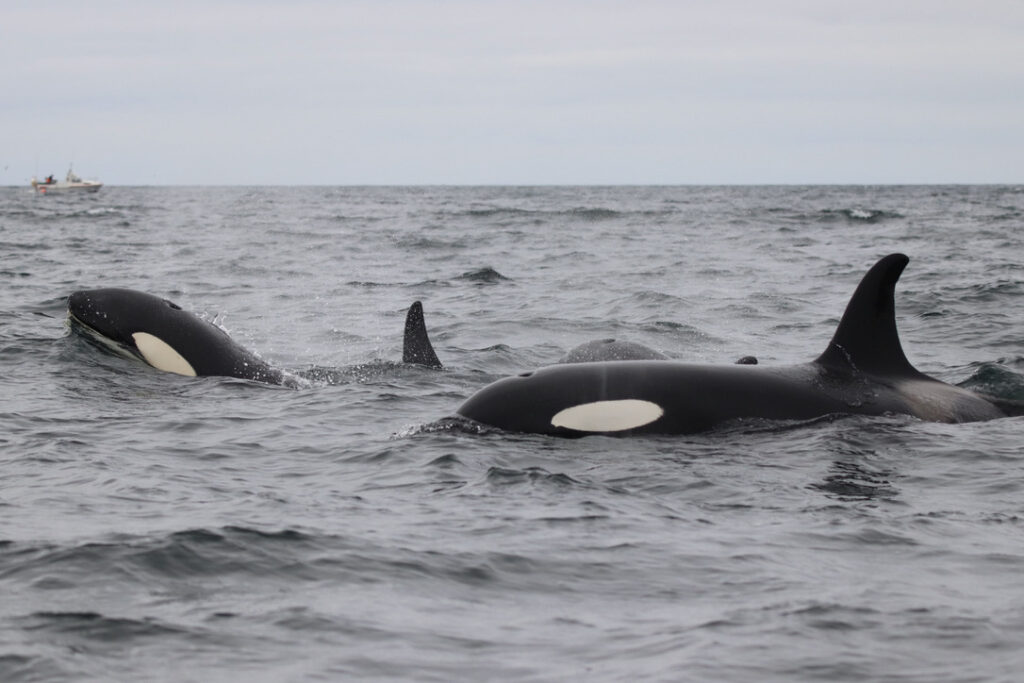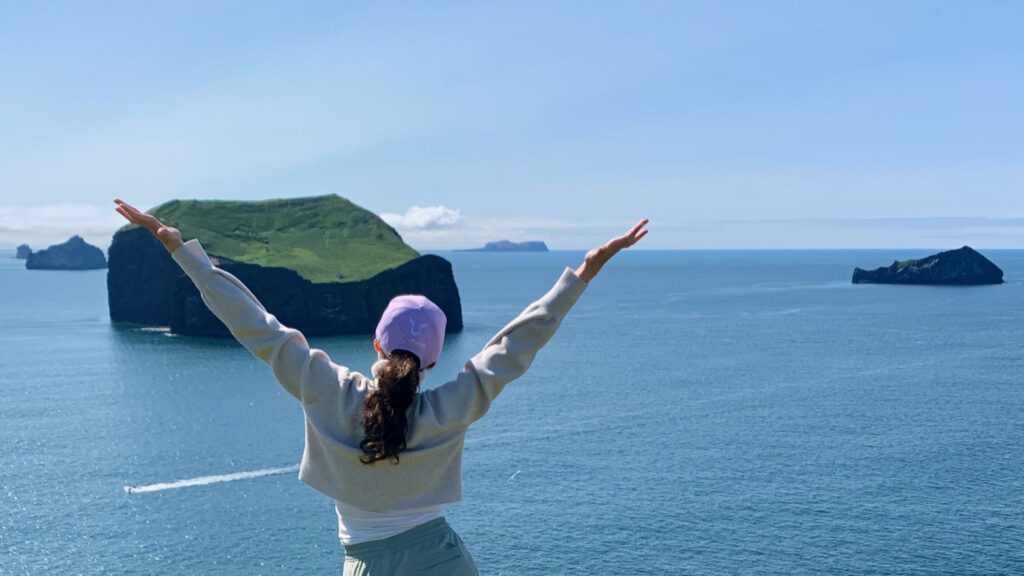I am currently in Iceland with the Icelandic Orca Project. My collaborator, Dr. Filipa Samarra, sent me the samples I used in the first chapter of my PhD thesis. We studied the impact of diet preferences on the accumulation of toxic contaminants in Icelandic killer whales. You can find the recap of our previous study here. In this post, I explain what I did with my fieldwork on killer whales in Vestmannaeyjar.
A long way from home
I’ve always felt like my PhD experience was incomplete because I did not get to go on the field and experience what it is like to biopsy killer whales. I’ve participated in biopsy sampling on humpback whales for my master’s, but I never did it on killer whales. The original plan was to go to Iceland in the summer of 2020, but we all know what happened. Because of the COVID-19 pandemic, I got stuck in Montreal for two years. So this year, I finally got on a flight and made it to Iceland!
The fieldwork is happening on the Vestamannaeyjar archipelago, off the south of Iceland. It consists of a bunch of small volcanic islands standing in the middle of the Atlantic Ocean. The main island, Heimaey, is where the local population lives (5000 inhabitants). Two volcanoes, Helgafell and Eldfell, overlook the harbor. The last big eruption occurred in 1973, created Eldfell, lasted six months, and expanded the island significantly. As a result, the scenery is absolutely breathtaking, with a mix of lava fields, black sand, sharp coastlines, and thick green grass.

The Icelandic Orca Project
The Icelandic Orca Project, now fully based in Vestmannaeyjar, studies killer whales visiting the area every summer, typically looking for herring. The team’s research investigates the killer whales’ movements, vocalizations, feeding techniques, interactions with the ecosystem, and much more. Because they don’t know what the whales eat when they are not in Vestmannaeyjar, researchers also collect biopsies. They help us to understand the population’s genetics, long-term feeding ecology, and contaminant accumulations. That’s where I come in, as a collaborator, with my PhD research.

If you thought collecting biopsies was easy…
Biopsies consist of a “skin core”, a.k.a. a 25-40mm-deep piece of skin and subcutaneous blubber. Collecting them is not an easy task. You must keep your balance on the bow while holding a big air rifle and aim a tiny dart at an unpredictably surfacing animal 15m (50ft) away from the boat. I would have zero chances of collecting one. Luckily, we have a couple of experts with many years of experience who can perform this crazy task.
The team must coordinate their effort: the captain has to predict where the whales will surface and position the ~5m (16ft) boat accordingly; the biopsy collector must aim behind the whale’s dorsal fin and shoot the dart quickly; the teammate in charge of photo-ID must take a photo of the exact moment the dart hits the whale, and the behavior recorder has to note the reaction of the animal. This all happens within 3-4 seconds. It is quite a surreal experience. Sometimes it can take hours to collect just one sample!
One sample for up to six different analyses
After collecting the biopsies, we store them in a cooler until we get back on land to process them. We then cut the biopsies into different parts; each one will be used for a separate analysis. For example, the skin can be used to calculate the ratios of different isotopes of carbon, nitrogen, and/or sulfur, which gives us information about the trophic level of an animal. We can also use the skin to calculate the accumulation of mercury and other toxic metals in the whales.
The skin/blubber interface can be used in genetic analyses to understand the structure of a population. Finally, we can use the blubber to measure the composition of lipids, which gives us information on what the whales eat. We can measure the concentration of harmful contaminants, like pesticides and flame retardants, as well. We can even measure different hormones like cortisol. They represent the stress levels of the animal.

My experience with the Icelandic Orca Project
I am having the most amazing time here in Iceland. The team has been so welcoming, and I felt like I truly was part of the project, even though I could only stay for two weeks. I fell in love with Vestmannaeyjar and its community. The scenery is just incredibly beautiful, and I spent my evenings chasing sunsets and searching for puffins and killer whales around the southern tip of the island. Feeling like you are lost in the middle of the ocean is quite extraordinary. I am leaving in two days but already preparing for my next trip back!
I spent my time on the island helping with data collection and sightings from the land station and collecting footage on biopsy sampling from the boat. When the weather was bad, I helped with data entering, gave a talk about my research, and worked on finishing the third chapter of my thesis. I also am heading to the Society of Marine Mammalogy conference in a week, so I had to finalize my talks and prepare to go to Florida.

Grateful beyond words
Being able to learn so much from Filipa and the Icelandic Orca Project team meant the world to me. I feel like I have learned more about killer whales in two weeks than during three years of PhD work. Now, I understand and appreciate the samples I received and the work that went into it so much more. I am beyond grateful for this amazing experience, and I would like to personally thank Filipa and the entire IOP team for their kindness and wisdom.
Of course, none of this experience could have happened without some help from the Government of Quebec and the support of my PhD advisor. I obtained two grants to travel to Iceland and record biopsy sampling and field work to include in a mini-documentary about my thesis (coming early 2023). The first grant came from the FRQNT (DIALOGUE grant) and the second one came from the Quebec Center for Biodiversity Science.
This experience has inspired me and given me new ideas for my future research. I am very excited to see what the universe has in store for me in the next couple of years.
Thank you for reading this post. Do not hesitate to get in touch and chat about orcas. You can click on any of the icons at the top of the page.